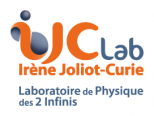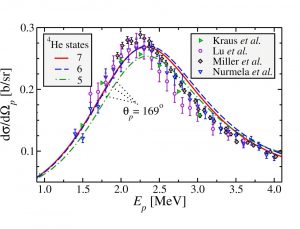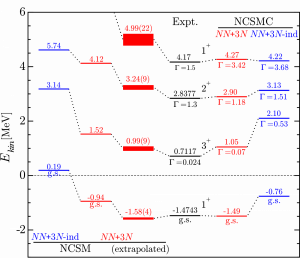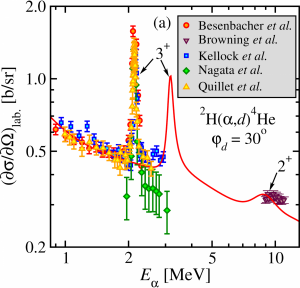Many fascinating aspects of the structure of atomic nuclei — from their extreme single-particle properties to their highly collective states — can be investigated through diverse nuclear reaction mechanisms such as fragmentation, induced fission, multi-nucleon transfers etc.
Heavy-ion fusion is also of enormous importance, being frequently used to create compound nuclei whose “evaporation residues” (left after rapid cooling by emission of neutrons, protons and alpha particles) could be super-heavy nuclei, or strongly deformed systems at very high spins, or nuclei with exotic neutron/proton ratios… The fusion reaction depends strongly on the internal structure of the colliding target and projectile, especially when they possess highly collective vibrational or rotational modes. Barrier distributions measured over many years in various laboratories worldwide confirm our understanding of fusion as an aspect of “quantal tunneling in the presence of an environment”, a phenomenon arising in many other branches of physics and chemistry.
These successes allow us to exploit our results in areas where experimental data are particularly sensitive to entrance-channel effects, such as the spin distributions of very heavy nuclei, whose properties may yield valuable information on the single-particle states responsible for the existence of an “island of stability” for superheavy elements. But there remain important unsolved problems that we are actively studying, such as for instance, the rapid decrease of the fusion probability at energies far below the Coulomb barrier, the possible effect of the multiple weakly-coupled channels, or the preference for heavy systems for “quasi-fission” instead of an equilibrated compound nucleus.
Few-body methods and more / ab initio methods
Nuclear theory has been revolutionized by the emergence of nuclear effective field theory (EFT) and ab initio methods for the solution of the Schrödinger equation. These tools are complementary and most importantly provide a means for quantifying the reliability of the calculations. While EFTs have brought in our field the missing link to the underlying QCD and the hope to quantify theoretical uncertainties, ab initio methods provide exact solutions within a computable error margin of the bound (or more rarely scattering) many-body problem. In the last decade, our field has thus been able to rapidly progress in the area of predictability and precision.
One of the frontiers in the development of ab initio methods is their extension to reactions. For up to four nucleons, bound-state techniques allow for exact solutions. For well-bound targets, we have developed an ab initio reaction method that is able to treat exactly all low-energy opened channels from elastic to transfer.








